
 |
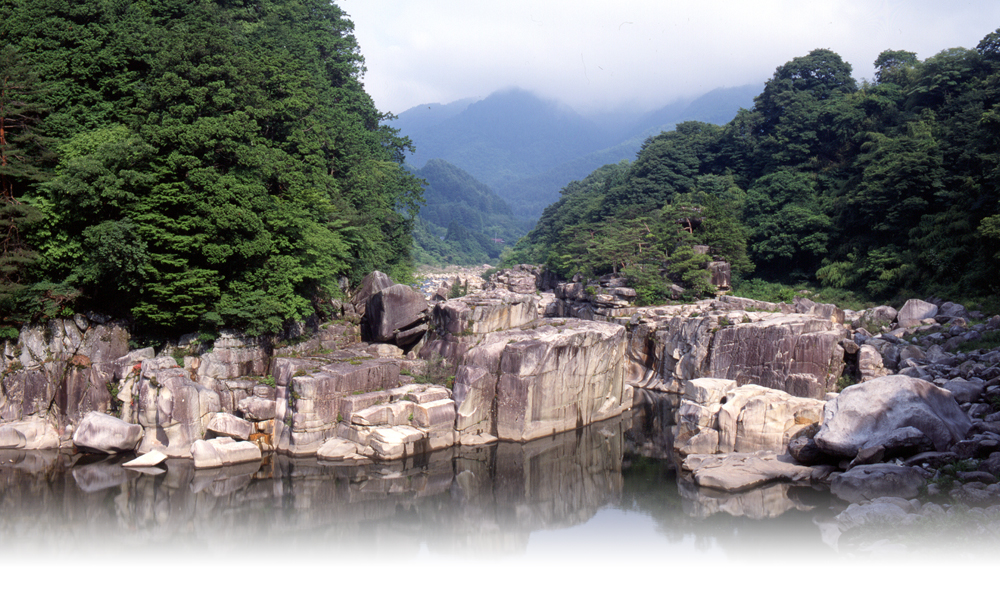
| Nezamenotoko Gorge has been admired by travelers since olden times, as an unforgettable scenic spot on the Nakasendo, as well as a landmark of the Kisoji (road) a section of the Nakasendo in the Kiso Region. |
Nezamenotoko Gorge
| Agematsu Town is situated on an area of granite bedrock. In such geological conditions, the granite terrain was cracked by the flow of the Kiso River and eventually formed this artistic line of square columnar rocks, called Nezamenotoko Gorge. Cherry blossoms bloom around the park in spring, and the mountains across the river are dressed in fall foliage during fall. |

Nezamenotoko Gorge and its periphery viewed from Rinsenji Temple
The Kiso River flows from right to left. The railway below is the JR Chuo Line. The valley on the right goes up to Akasawa Natural Recreational Forest, and at the bottom left is the Art Park. In rainy season or after a shower in summer, a rainbow can occasionally be seen over the valley.
Access to Nezamenotoko Gorge
It is an approximately 1km long stretch along the Kiso River.
|
Nezamenotoko Gorge’s Legend of Taro Urashima
| Taro Urashima saved a sea turtle and was invited to the palace under the sea... This famous legend remains in various different regions of Japan. The Urashima legend at Nezamenotoko Gorge concerns the scene where Taro opens the souvenir casket after returning from the palace under the sea. After having spent a few days in the dreamy palace under the sea, Taro came back home. He was surprised that nobody remembered him because it had, in fact, been 300 years since he traveled to the undersea realm. This motivated him to travel around Japan. Eventually, Taro stopped at Nezamenotoko Gorge. He was pleased with the scenery and settled there, fishing or offering medicines to the local residents that he created according to a scroll brought back from the undersea palace. One day, he remembered the souvenir casket he had brought back from the palace under the sea. Though he was instructed not to open the casket, he did so anyway, and a purple smoke rose up, instantly aging Taro by 300 years... Then, Taro was so sad that he disappeared from Nezamenotoko Gorge where, thereafter, an image of the Benzaiten deity was found. It is said that Rinsenji Temple was built to enshrine it. The official Agematsu Town character “Taro-chan” is based on this Urashima legend. |
 |
Four Seasons of Landscapes
| Spring Spring starts from early April around Nezamenotoko Gorge, when cherry blossoms begin to bloom, followed The Kiso River is a slightly milky emerald green, collecting the meltwaters from the snowfields of Mt. Ontake and Mt. Komagatake. The fresh green leaves of the woods on the surrounding mountains turn a deeper shade, day by day. |
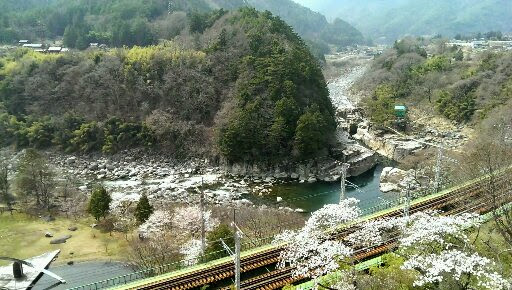 |
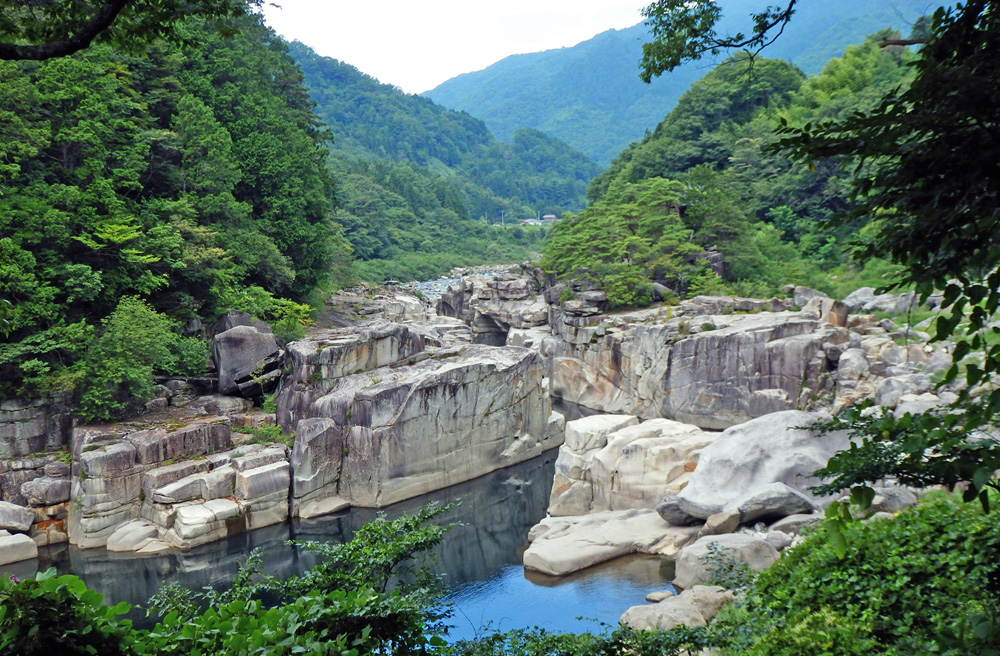 |
|
| Summer In the middle of July, Omiya Shrine’s Annual Festival is held, marking the end of the rainy season. The sun shines stronger driving summer temperatures to their peak. A cool wind blowing over the rocks by the river is a natural blessing that shelters us from the summer heat. In summer, people might feel like bathing there, but it is not allowed. |
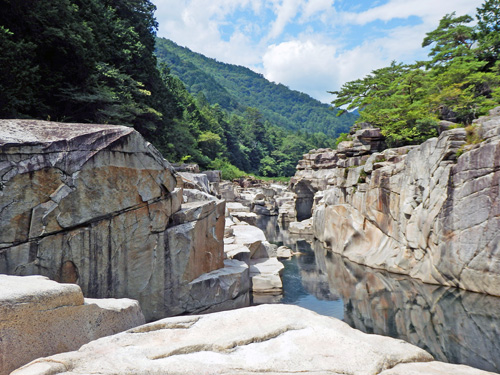 |
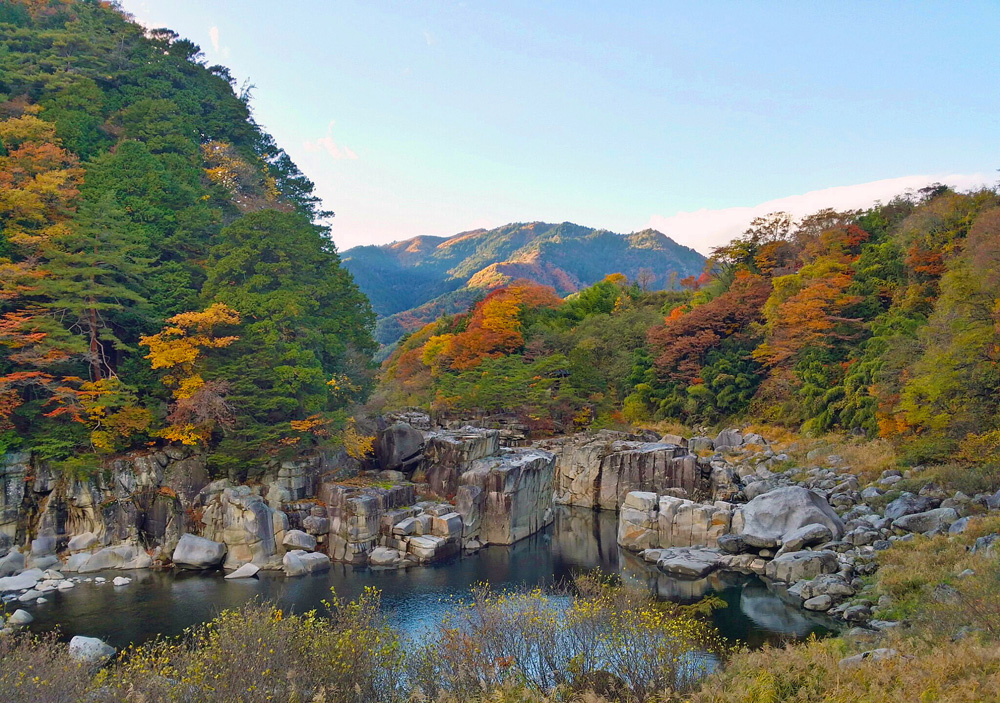 Fall Late October brings a cold wind on the Nakasendo, heralding the fall foliage season. For Nezamenotoko Gorge, the best time for viewing is usually from early November. The surrounding mountains are covered with colorful foliage celebrating the end of the green season. As the leaves start to fall, rime can be seen on the mountain ridges. Soon after peak fall foliage over the Kiso River, winter arrives on the Kisoji (road), and in the background, Mt. Daigamine gets capped with snow. |
|
